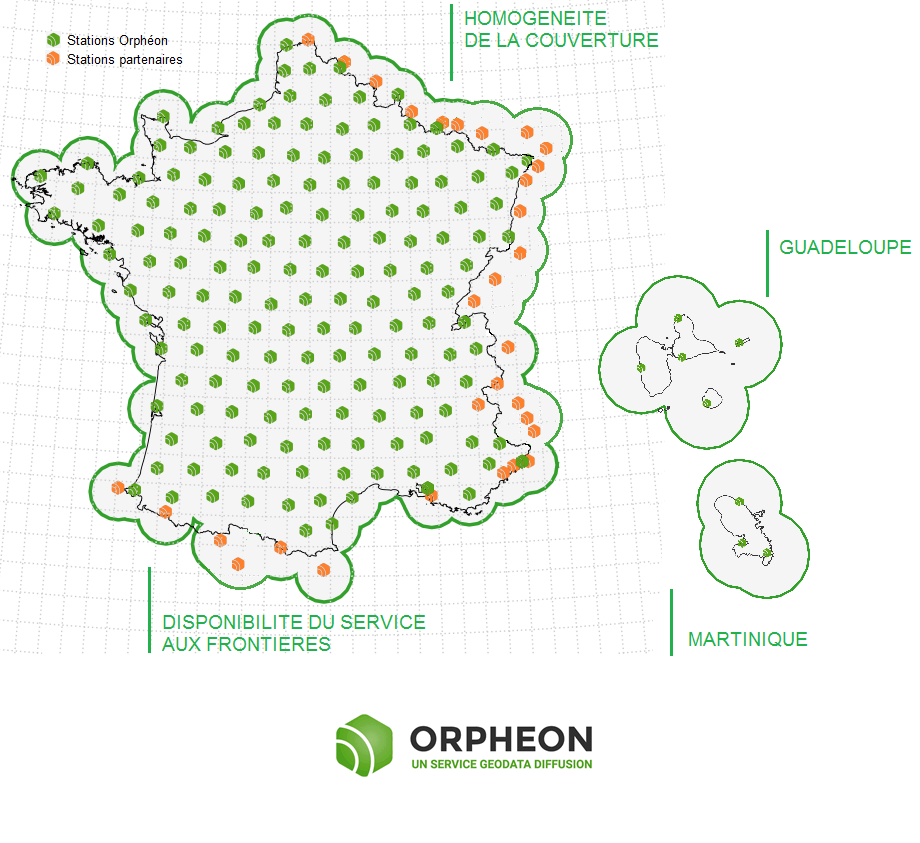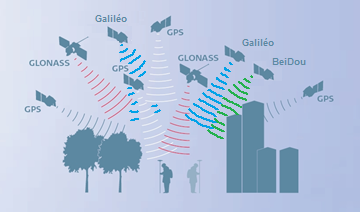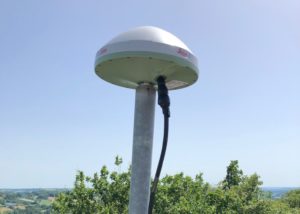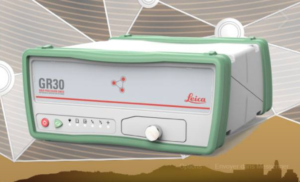
A choice of GNSS hardware and receiver
Orpheon permanent stations
The uncompromising choice of all the materials and equipment used to compose our permanent stations and to create the Orphéon Full GNSS network; i.e. capable of supplying corrections uniformly throughout the country for all available satellite constellations (GPS, Glonass, Galileo, Beidou). All the sensors and antennas making up the RTK bases are of the same brand so that electronic biases are perfectly controlled or at least constant in the network RTK calculation. The station’s GPS/GNSS antenna is connected by an antenna cable to an electrical box housing:- The GPS / GNSS receiver.
- A modem to connect it to our proprietary telecommunications network as well as a backup line.
- All the automation necessary to restart the site remotely in the event of equipment unavailability.
- Split data transmission for higher availability
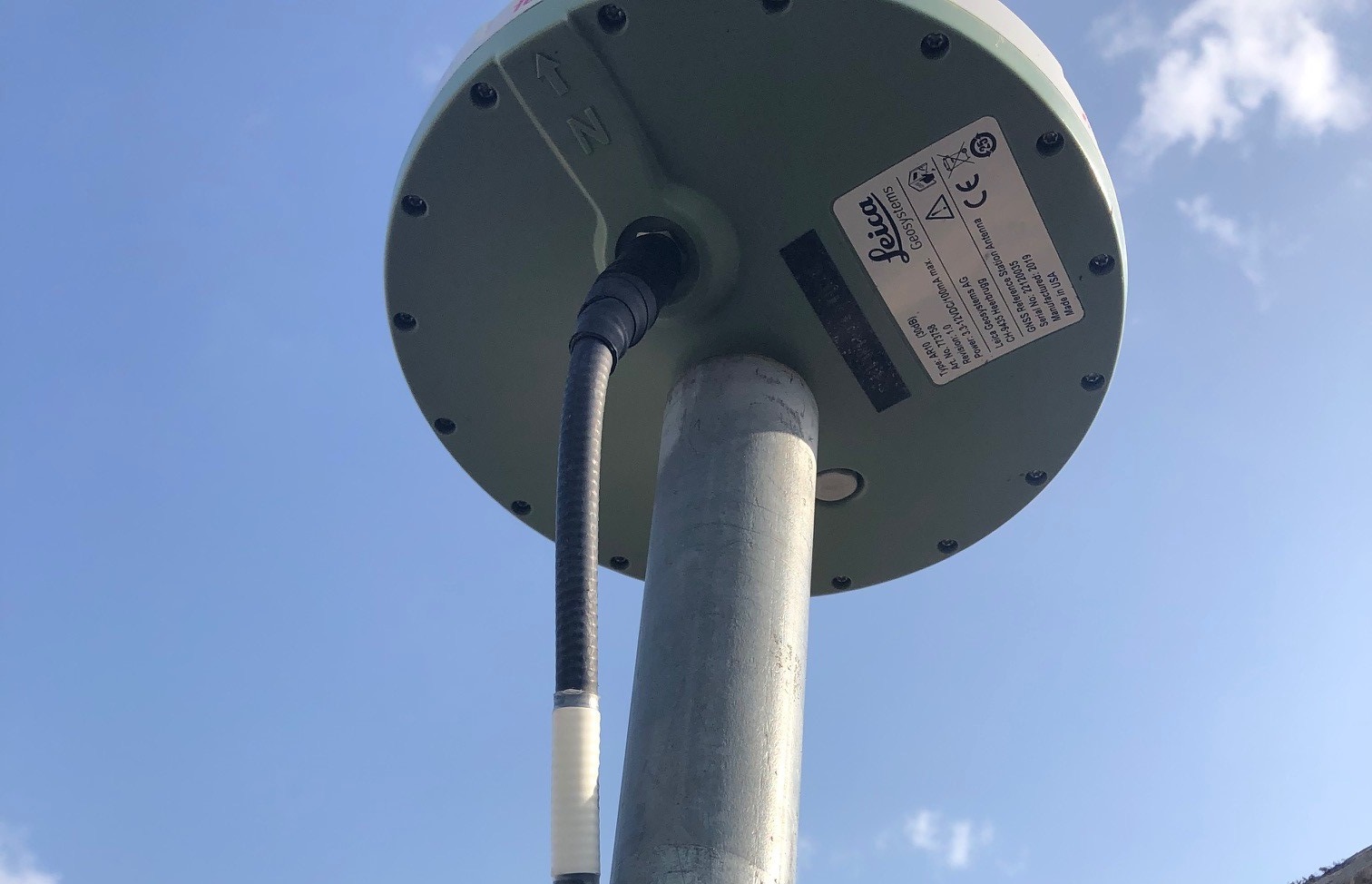
This choice of equipment and strategic receiver of major brand, scalable and secure which integrates:
- Full compatibility with all available satellite constellations such as GPS (USA), Glonass (Russia), Galileo (Europe), Beidou (China), as well as SBAS, QZSS, GAzan, TERRASTAR and other L-band systems.
- A Web interface allowing full control of the hardware and the remote receiver.
- RTK solutions fixed and monitored the position of the antenna as a reference station.
- Several Ethernet connections, to allow a main connection and a backup connection.
- A GPRS module to provide backup in 4G via a second mode of communication of observation data.
- A combined HTTPs and SSL restriction and encryption system to prevent unauthorized access to the receiver.
- Rugged receivers capable of 24/365 operation that can withstand significant summer/winter temperature variation conditions in demanding environments. These receivers undergo a period of “Burn-in” (long-term tests), before being installed on a site.
- A rugged 8GB memory card for backing up observation data.
- Low power consumption for extended operating time.
- Fully automated power management for 2 external power sources.
- A removable internal battery
- An antenna designed for broadband tracking which guarantees very good tracking of satellites at low elevation, effective suppression of multipath effects and high precision of the phase center on all frequency bands.
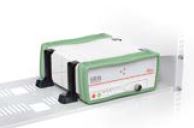

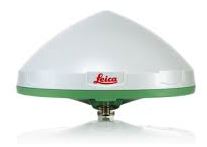
A very regular geometric layout without equivalent in France.
The choice of the location of the antennas was made in a thoughtful and programmed manner in order to cover the territory in an optimum manner with density and geometric regularity.
Whatever your position, the distance from the nearest reference station is never more than 30 km.
With the Full GNSS Orphéon network, you work with identical precision throughout the territory thanks to a uniform distribution of stations in all the areas covered,
The Orphéon network thus stands out significantly from its competitors who are multiplying the number of reference stations because of their disorderly location on the territory and whose coverage is losing homogeneity, sometimes leaving very large distances in the meshes of their network.
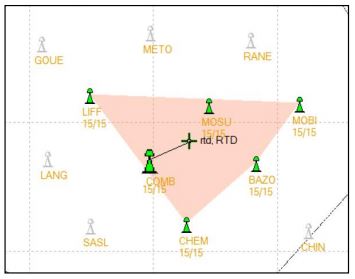
The most regular and geometric network layout on the whole territory to create a regular mesh of 60 km and deliver the precise corrections for the constellations GPS, Glonass, Galileo, Beidou.
Each of the 192 GNSS reference stations is installed on a building offering perfect visibility of the sky. In such a way that no obstacle comes between a satellite more than 10° above the horizon and the antenna, and that no obstacle can serve as a source for a multipath.
Quality criteria for hosting sites
Each of the reception sites for the reference stations in the Orphéon network is selected with the greatest care and must respect criteria allowing stability and the best reception of satellite signals. The buildings on which the antenna masts are stowed were selected primarily on the basis of stability criteria.
In the selection of our reception sites, no metal structure (such as hangars) nor any building of great height or subject to excessive mechanical constraints (such as silos).


